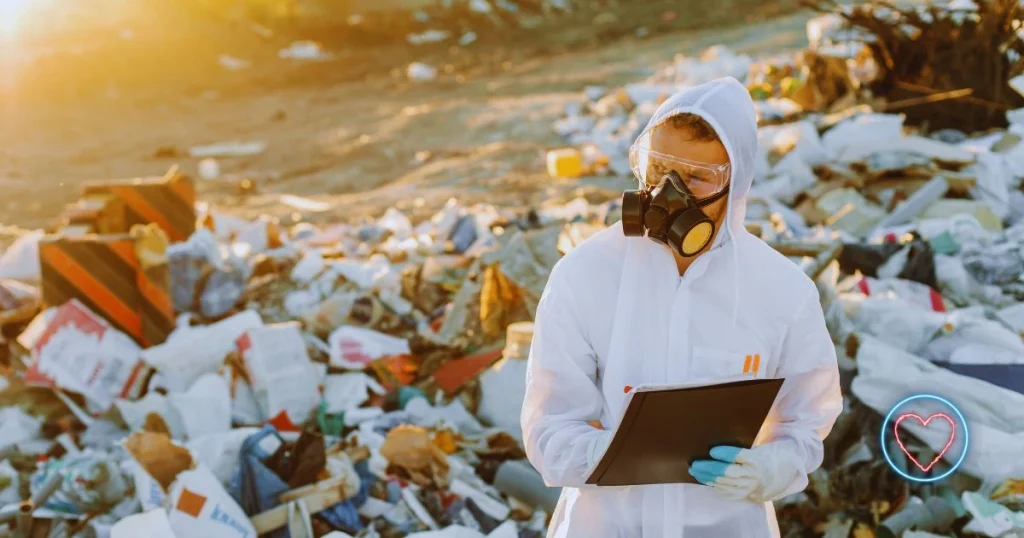As global populations continue to grow and urbanization accelerates, the problem of waste is becoming increasingly urgent. By 2050, experts estimate that global waste generation will increase from 2.24 billion tons in 2020 to nearly 3.4 billion tons. Traditional methods such as landfilling and incineration no longer offer sustainable solutions. Fortunately, a wave of waste management innovations is transforming the industry and offering renewed hope for environmental preservation.
These advancements aim not only to reduce waste but also to turn it into a valuable resource. In this article, we explore the latest innovations that are reshaping the future of waste management.
Understanding the Global Waste Crisis
To appreciate the value of innovation, we must first understand the scope of the waste problem. Currently, about one-third of the world’s waste is not managed safely or sustainably. In the United States alone, citizens generate over 292 million tons of municipal solid waste every year. Shockingly, less than 10% of plastic waste undergoes proper recycling.
Improper waste disposal doesn’t just fill up landfills—it also pollutes water systems, emits greenhouse gases, and destroys natural habitats. Therefore, modernizing waste management is essential to environmental sustainability.
Smart Waste Collection: Technology at the Curb
IoT-Enabled Smart Bins
One of the most exciting developments is the rise of smart bins equipped with IoT (Internet of Things) sensors. These bins track waste levels in real time and notify collection services when they are full. As a result, cities can optimize collection routes and reduce fuel consumption significantly.
For example, the city of Copenhagen uses these smart bins to cut garbage truck mileage by 40%, ultimately lowering emissions and operational costs.
AI in Waste Sorting
Traditional sorting methods are labor-intensive and error-prone. However, AI-powered robots now use machine learning and computer vision to sort materials with over 90% accuracy. These systems operate faster than human workers and can function continuously.
Companies like AMP Robotics have implemented AI systems in recycling facilities, helping to increase efficiency and improve profitability.
The Circular Economy: Turning Waste into Wealth
While reducing waste is crucial, rethinking how we use it is equally important. That’s where the concept of the circular economy comes into play. Rather than discarding used materials, a circular economy repurposes them into new products, thereby minimizing waste and conserving resources.
Upcycling and Industrial Symbiosis
Unlike traditional recycling, upcycling adds value to waste by transforming it into better-quality materials. Moreover, industrial symbiosis allows one industry’s waste to become another’s input.
For instance, in Kalundborg, Denmark, a local power plant supplies excess steam and fly ash to nearby manufacturers, who use it in cement production and heating systems.
Plastic-to-Fuel Technologies
Innovators are also converting plastic waste into usable fuel through processes like pyrolysis. This technology breaks down non-recyclable plastics into diesel or gasoline, offering a practical way to extract energy from materials that would otherwise be discarded.
While not a complete solution, plastic-to-fuel initiatives provide an alternative to overflowing landfills.
Biotechnological Advancements
Biology plays a surprising role in modern waste management. Scientists and companies are using natural processes to address complex waste problems more efficiently.
Biodegradable and Compostable Packaging
To combat the overwhelming plastic crisis, several companies are developing packaging made from bioplastics such as cornstarch, cassava, and seaweed. These materials break down in weeks rather than centuries and often require only standard composting conditions.
A great example is Notpla, a UK-based startup producing edible seaweed packaging for water and condiments.
Enzyme-Based Plastic Breakdown
In addition to plant-based packaging, researchers have discovered enzymes capable of breaking down plastic rapidly. For example, scientists at the University of Texas developed FAST-PETase, which decomposes PET plastics in under a week.
These discoveries could revolutionize how we handle millions of tons of plastic waste each year.
Digital Tools for Recycling Efficiency
Modern waste management also benefits greatly from data-driven tools and digital platforms. These innovations allow for better tracking, transparency, and decision-making.
Blockchain for Waste Tracking
Blockchain technology offers a transparent way to track waste through the supply chain. Each transaction and movement gets recorded immutably, preventing fraud and improving efficiency.
Organizations like Plastic Bank use blockchain to reward people in developing nations for collecting and recycling plastic, turning social challenges into environmental solutions.
Online Waste Marketplaces
In addition, platforms such as Rubicon connect waste producers directly with recyclers. Through real-time data, these platforms help businesses manage waste more effectively, optimize routes, and achieve sustainability goals.
Community-Based Innovations
Not all innovation comes from high-tech solutions. In fact, some of the most impactful changes are driven by communities that adapt behavior, policies, and planning.
Pay-As-You-Throw (PAYT)
Under PAYT programs, residents pay based on how much waste they generate. This system encourages people to recycle and compost more, leading to less waste overall.
For example, San Francisco’s PAYT model contributed to the city’s impressive 80% waste diversion rate.
Zero-Waste Cities
Some municipalities take it even further. Cities like Kamikatsu, Japan, are aiming to become fully zero-waste. Residents there separate waste into 45 different categories and compost nearly everything.
Such ambitious initiatives show that with strong community participation, dramatic results are possible.
Handling Organic Waste Sustainably
Organic waste often ends up in landfills where it decomposes anaerobically and releases methane, a potent greenhouse gas. Fortunately, new innovations offer cleaner alternatives.
Food Waste to Biogas
One such solution is anaerobic digestion, which converts food waste into biogas and nutrient-rich fertilizer. This approach provides both clean energy and agricultural benefits.
In New York City, food scraps collected from households and restaurants help power city operations, making waste a source of renewable energy.
Insect Composting
In another fascinating development, companies are using black soldier fly larvae to break down food waste quickly. These larvae consume organic material and turn it into protein-rich animal feed and compost.
Startups like AgriProtein are scaling up these operations to industrial levels, creating new value chains from food waste.
Building with Recycled Materials
Waste isn’t just something to dispose of—it can also become part of our infrastructure.
Plastic Roads and Bricks
For example, engineers are using recycled plastic to construct roads and create durable bricks. These alternatives not only reduce waste but also offer enhanced durability and water resistance.
In India, several rural roads have already been paved with plastic-infused asphalt, significantly increasing their lifespan.
Recycled Glass in Concrete
In addition, recycled glass and construction waste can serve as aggregates in concrete production. This approach conserves natural resources like sand, which are depleting rapidly due to overuse.
Corporate Responsibility and Innovation
Corporations are stepping up, recognizing their critical role in sustainable waste practices.
Extended Producer Responsibility (EPR)
Through EPR programs, companies take responsibility for the entire lifecycle of their products, including disposal. This policy encourages better product design and robust recycling systems.
For instance, Apple and Dell have launched buy-back programs that refurbish or recycle used electronics, reducing e-waste significantly.
Sustainable Packaging
Meanwhile, brands are also investing in eco-friendly packaging. Coca-Cola has released 100% recycled plastic bottles in several markets. Additionally, Loop offers a platform where consumers can purchase items in reusable containers and return them after use.
Regulatory Support Drives Innovation
Innovation doesn’t occur in a vacuum. Often, it accelerates under strong regulatory frameworks.
For example, the European Union’s Circular Economy Action Plan requires that all packaging be recyclable or reusable by 2030. These mandates push companies to develop new materials, technologies, and business models.
Similarly, cities that enforce bans on single-use plastics see a rise in reusable alternatives and a decrease in waste volume.
The Role of AI and Predictive Analytics
Artificial Intelligence (AI) has started to play a significant role in modern waste systems.
Forecasting and Optimization
AI can predict waste generation trends, optimize collection schedules, and identify inefficiencies. When cities leverage this technology, they often experience reduced costs and improved service quality.
For instance, some municipalities report a 30% improvement in collection efficiency after implementing AI-driven route planning.
Challenges That Remain
Despite these advances, several obstacles still hinder progress:
- High upfront costs deter small municipalities from adopting advanced technologies.
- Many consumers remain unaware of proper recycling practices.
- Infrastructures in developing countries often cannot support modern solutions.
- Policy changes often lag behind technological developments.
Nonetheless, these challenges are not insurmountable. With continued investment, education, and collaboration, societies can overcome these barriers.
Global Collaboration is Key
Waste management is a global issue that demands collective action. Ocean plastic, for instance, affects marine ecosystems regardless of where it originates.
Programs like UNEP’s Clean Seas and the World Bank’s Global Waste Management Partnership provide platforms for international cooperation, especially in helping low-income countries build sustainable waste systems.
Conclusion: From Trash to Treasure
Waste management innovations are not just about cleanliness—they’re about creating a more resilient, circular, and sustainable future. From AI and blockchain to bioplastics and community action, the tools to solve the waste crisis are already here.
However, progress depends on how quickly governments, businesses, and citizens adopt these innovations. If we embrace these changes collectively, we can transform our trash into treasure—and ensure a cleaner planet for future generations.


